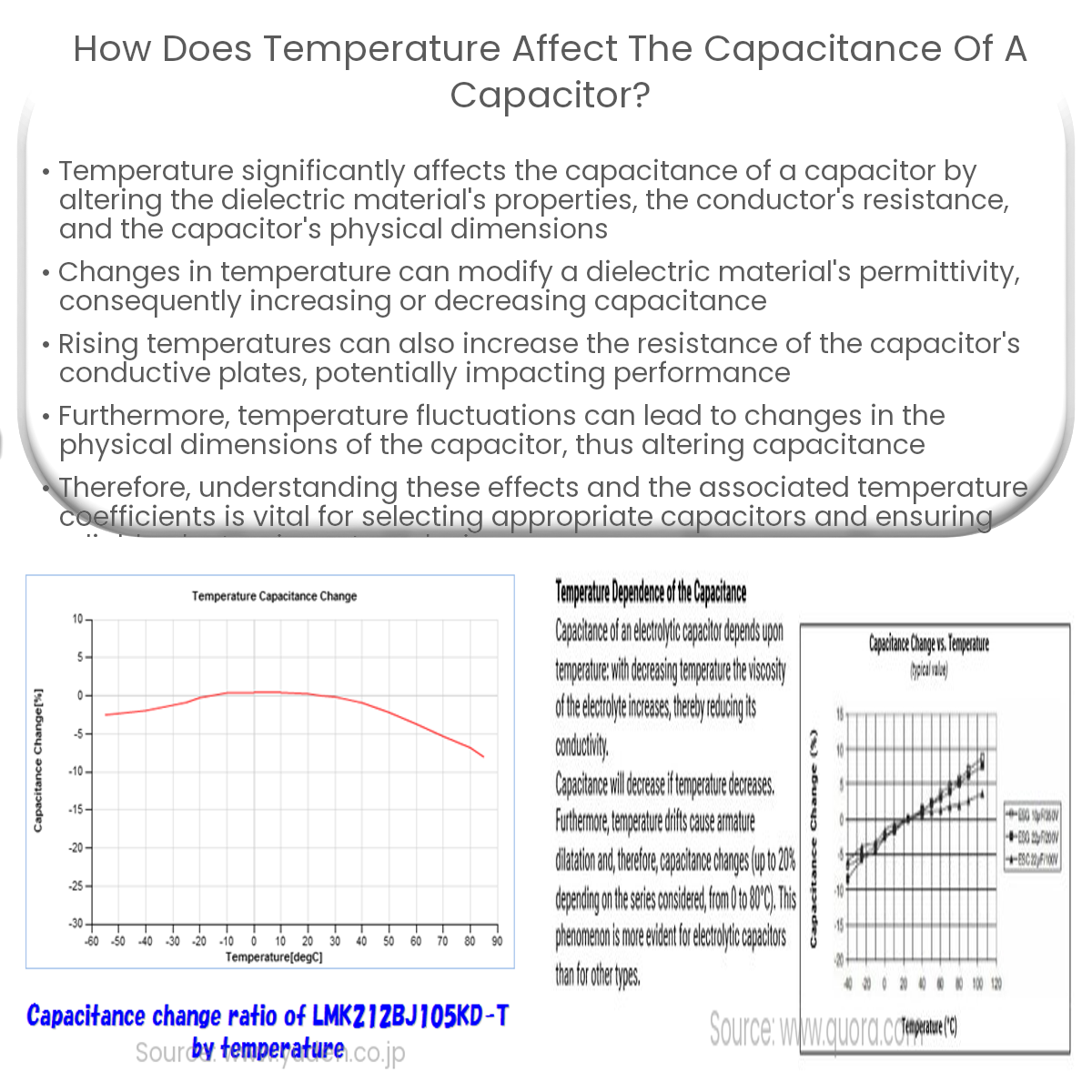Temperature affects a capacitor’s capacitance by altering the dielectric material’s properties, conductor resistance, and the capacitor’s dimensions.
How Temperature Affects Capacitance
The capacitance of a capacitor is influenced by various factors, including the temperature. Temperature can affect the dielectric material’s properties, the conductor’s resistance, and the capacitor’s physical dimensions. Understanding how temperature impacts capacitance is crucial for the reliable performance of electronic devices, especially those operating under extreme conditions.
Dielectric Material Properties
Temperature changes can alter a dielectric material’s properties, such as its permittivity and dielectric strength. Permittivity, which is the ability of the dielectric to store an electric charge, varies with temperature for different materials. For instance, some materials exhibit a decrease in permittivity as the temperature increases, resulting in reduced capacitance. Conversely, other materials exhibit an increase in permittivity with increasing temperature, causing an increase in capacitance.
Conductor Resistance
As temperature increases, the resistance of the capacitor’s conductive plates can also increase. This increased resistance can cause changes in the capacitor’s equivalent series resistance (ESR), which can ultimately affect the overall performance of the capacitor.
Physical Dimensions
Temperature changes can cause the capacitor’s physical dimensions to expand or contract, affecting the distance between the conductive plates. As the distance between the plates changes, so does the capacitance. For example, when the temperature increases, the plates may move farther apart, reducing the capacitance. Conversely, a decrease in temperature may bring the plates closer together, increasing the capacitance.
Temperature Coefficients
To quantify the effect of temperature on capacitance, manufacturers specify a temperature coefficient for their capacitors. This coefficient, typically expressed in parts per million per degree Celsius (ppm/°C), indicates the amount of change in capacitance per degree Celsius. Capacitors with positive temperature coefficients experience an increase in capacitance with increasing temperature, while those with negative temperature coefficients experience a decrease.
Temperature Stability and Application Considerations
When selecting a capacitor for a specific application, it is essential to consider the operating temperature range and the temperature coefficient. In applications where temperature stability is crucial, capacitors with low temperature coefficients or capacitors specifically designed for temperature stability, such as NPO or X7R ceramic capacitors, should be chosen.
In conclusion, understanding the relationship between temperature and capacitance is vital for designing reliable electronic systems. Engineers should carefully consider the temperature coefficients and operating temperature ranges of capacitors to ensure optimal performance under varying conditions.


